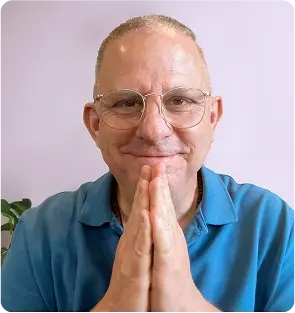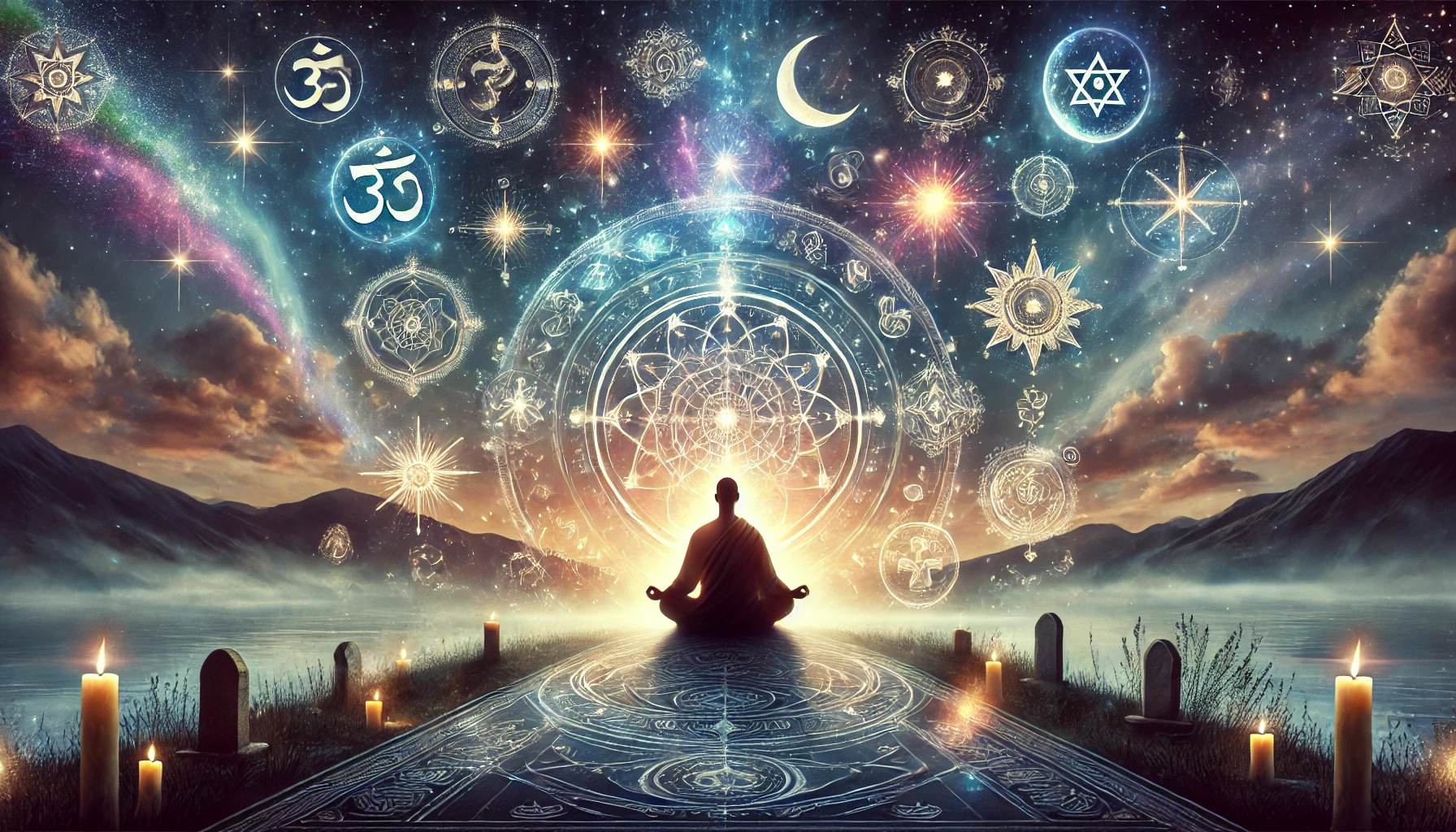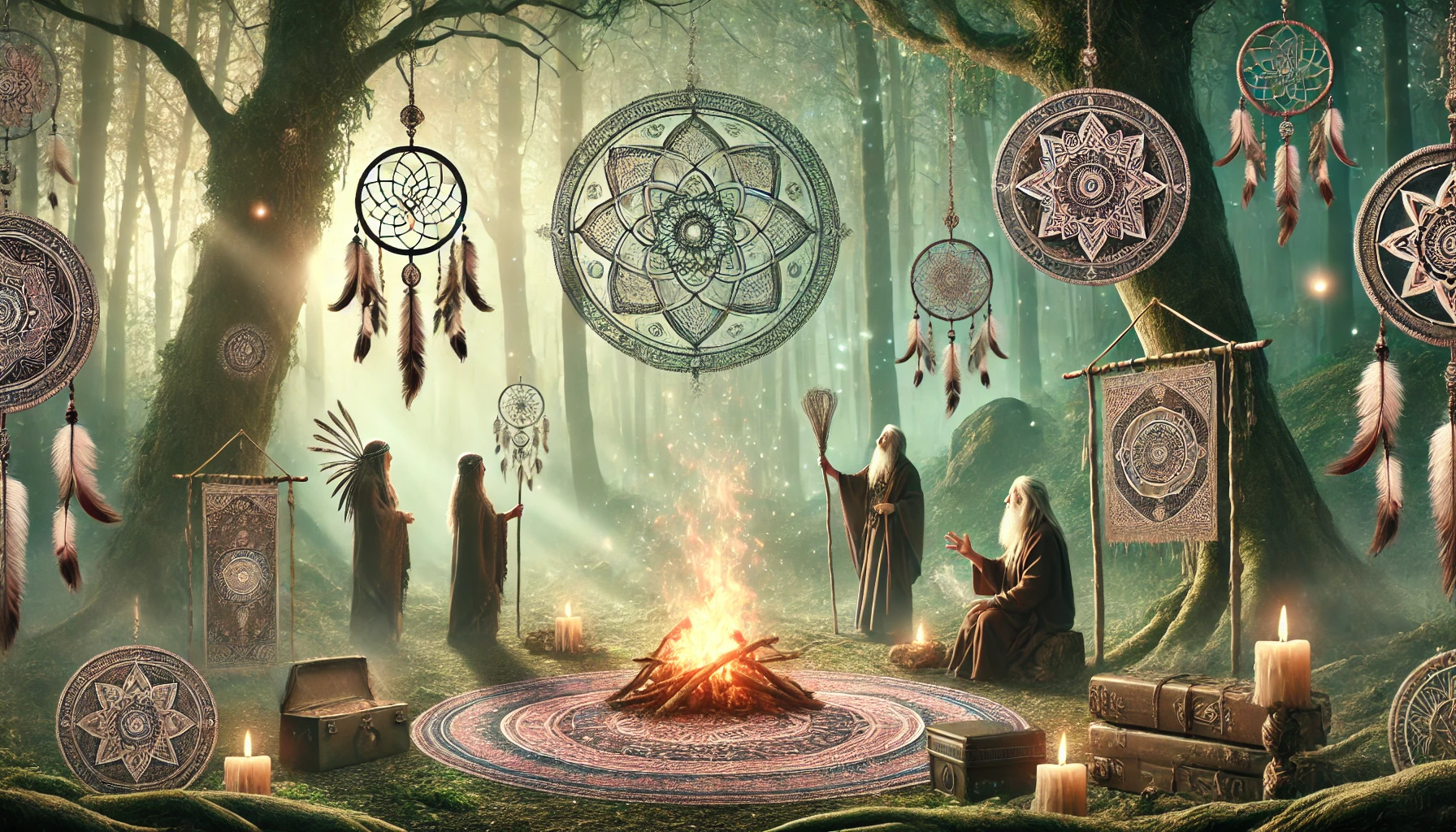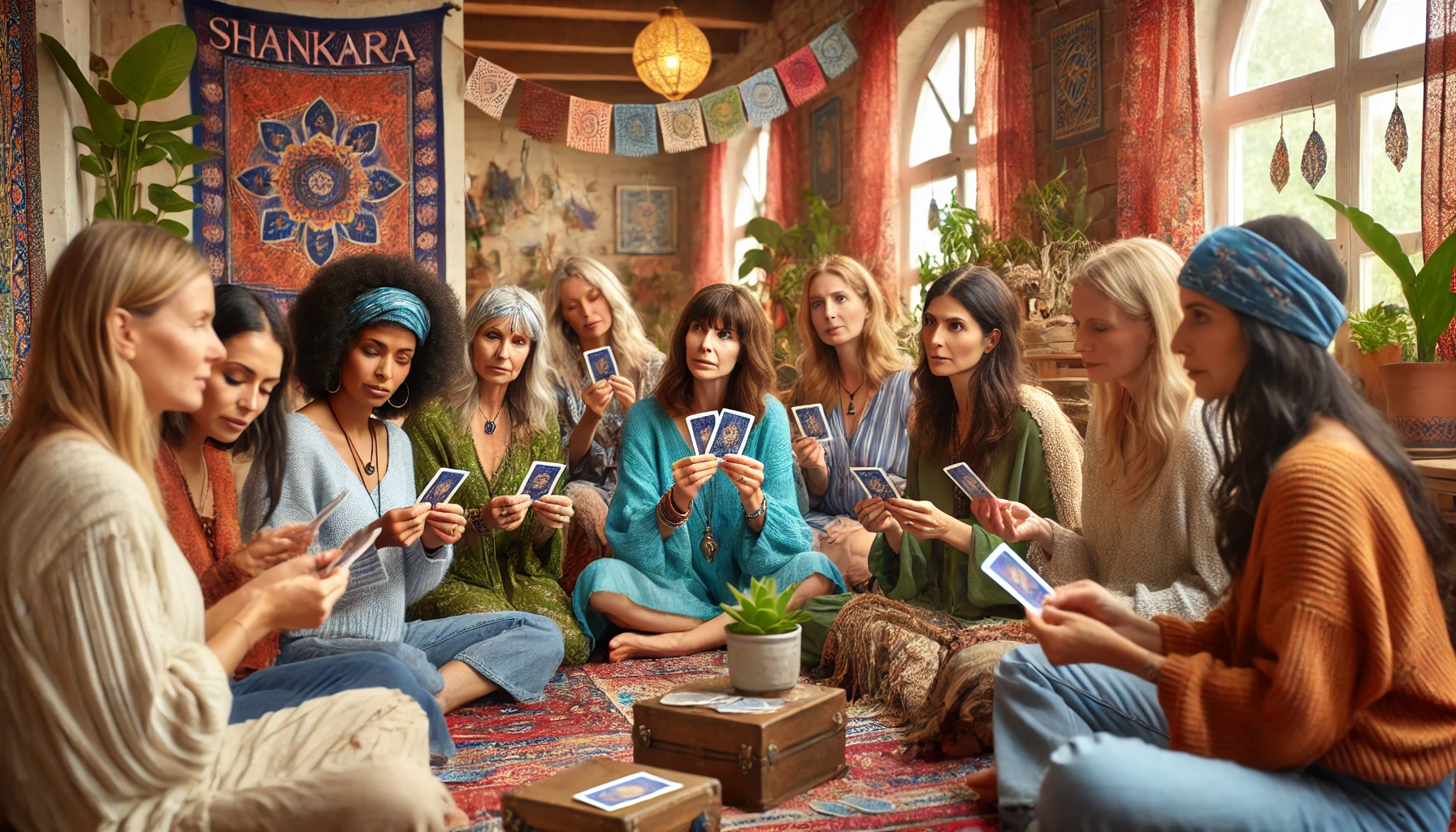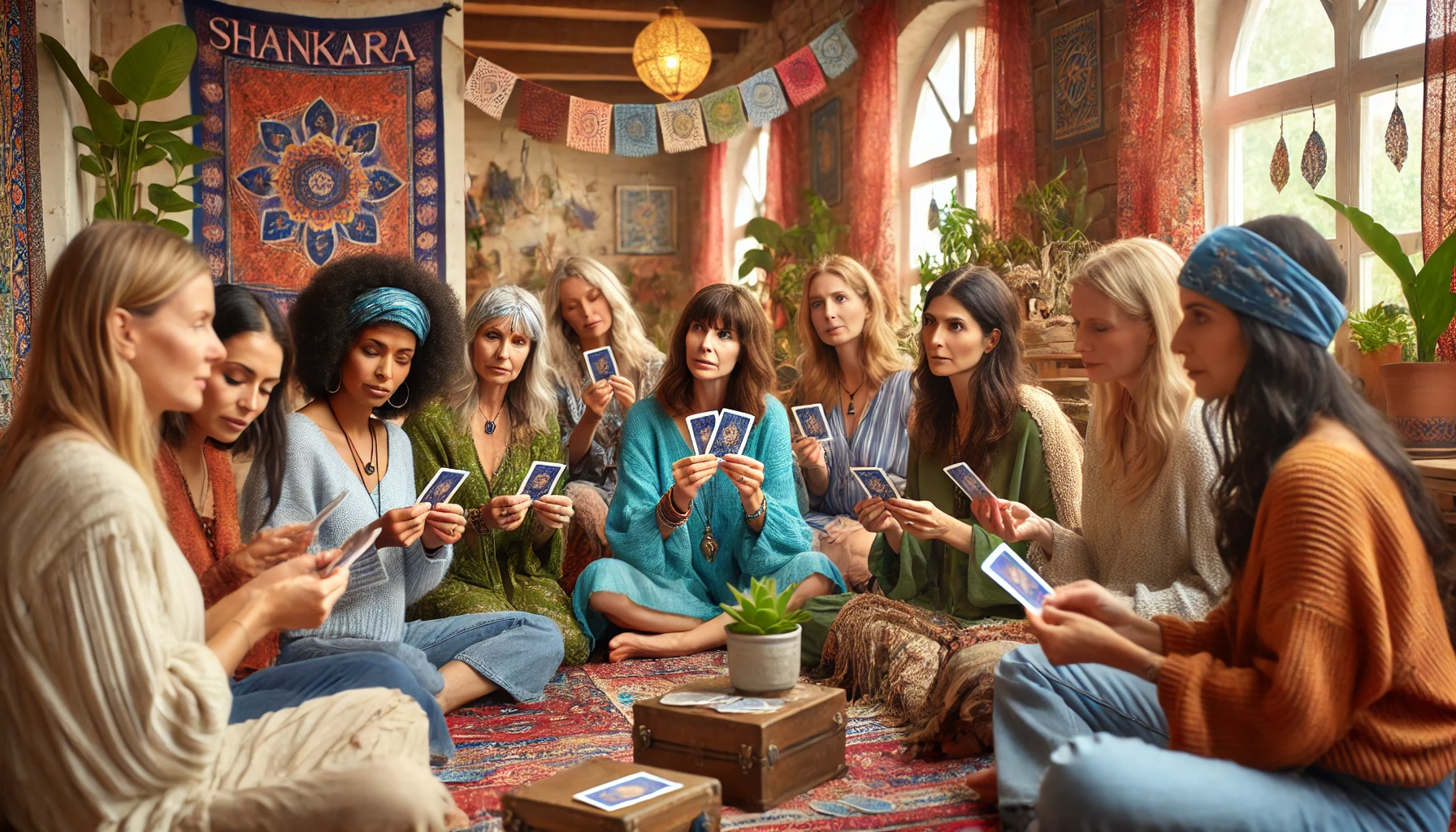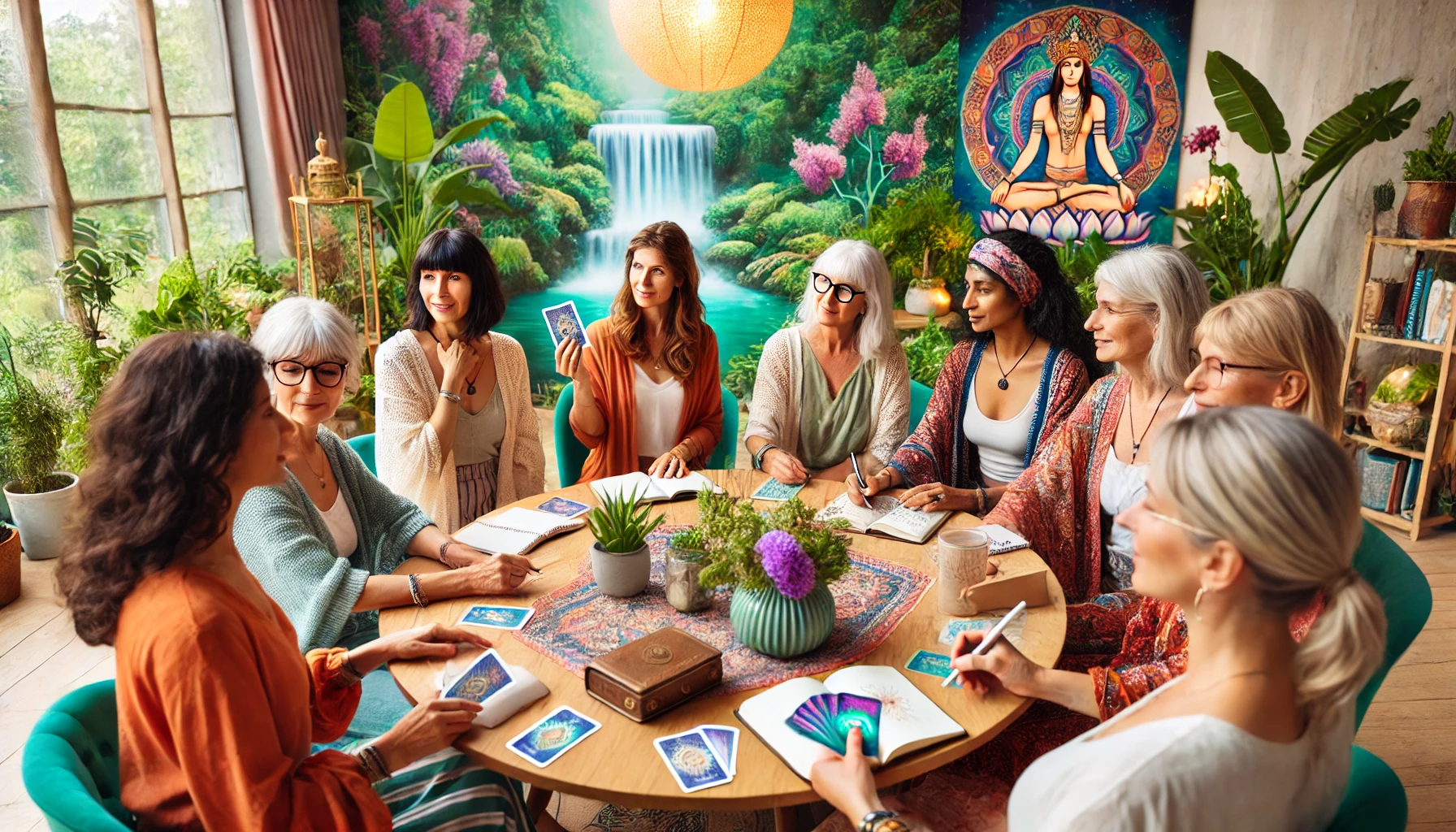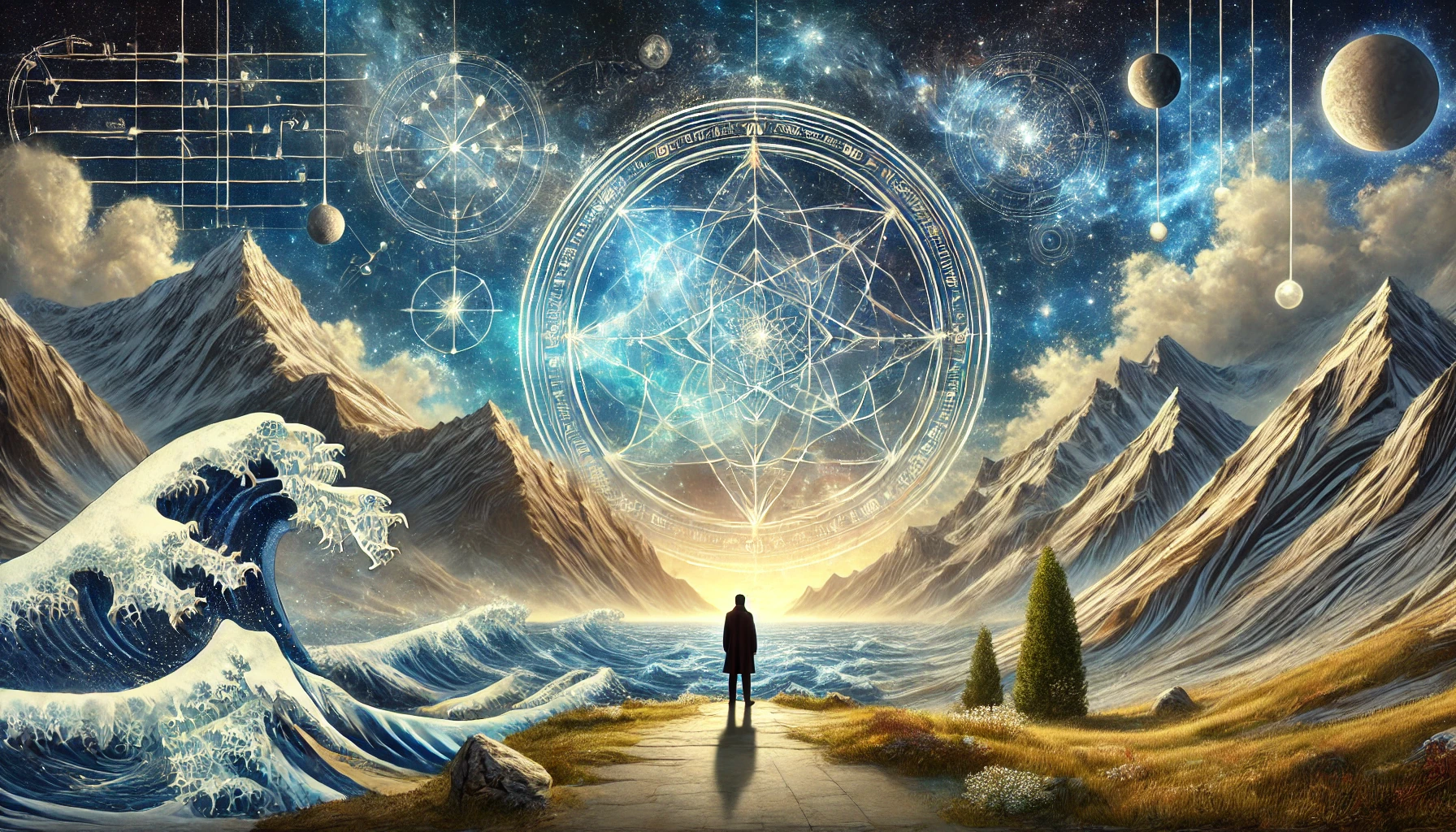
Terrence Howard’s Theories: Unveiling the Mystical and Scientific Intersections of Our Universe
Terrence Howard, an acclaimed actor known for his roles in “Hustle & Flow” and “Iron Man,” has embarked on an intellectual journey that marries the profound teachings of mysticism with the cutting-edge concepts of contemporary mathematics and physics.
His theories, which have gained traction on platforms like TikTok, Facebook, and Instagram, invite us to explore the possibility that the universe we perceive is merely a thin veil over a far greater reality. This article delves deeply into Howard’s most compelling theories, offering a nuanced perspective that merges advanced scientific thought with mystical insight.
The Unified Field Theory: A Mystical and Scientific Convergence
Howard’s pursuit of a unified field theory reflects a quest that transcends conventional scientific boundaries, seeking to unveil the fundamental interconnectedness of all forces in the universe. Unlike traditional physics, which often compartmentalizes different forces, Howard’s vision is steeped in the mystical understanding that everything in the universe is intrinsically linked.
Scientific Context
Unified Field Theory:
Current Status: Unified Field Theory seeks to unify the four fundamental forces of nature—gravity, electromagnetism, weak nuclear force, and strong nuclear force—into a single framework. While Einstein laid the groundwork, contemporary efforts include string theory and loop quantum gravity.
String Theory: Proposes that the fundamental particles are one-dimensional “strings” whose vibrations determine particle properties. This theory implies multiple dimensions beyond our observable universe.
Evidence: While empirical evidence is still lacking, the mathematical elegance and potential to resolve inconsistencies between quantum mechanics and general relativity drive ongoing research.
Loop Quantum Gravity:
Concept: Attempts to merge quantum mechanics and general relativity without requiring additional dimensions, focusing on quantizing space-time itself.
Evidence: Researchers are looking for indirect evidence through phenomena like black hole radiation and quantum fluctuations in the cosmic microwave background.
Advaita Vedanta Principle
Non-Duality (Advaita):
Core Idea: Brahman is the singular, non-dual reality underlying all existence. The perceived multiplicity of the world is Maya, an illusion created by ignorance (Avidya).
Philosophical Implication: Understanding the oneness of all things leads to liberation (Moksha) and transcends the illusion of separation.
Applications to Human Living
Holistic Health:
Integration: Modern health practices increasingly recognize the connection between physical health, mental well-being, and spiritual practices. Practices like yoga, meditation, and integrative medicine align with the holistic view of Advaita Vedanta.
Sustainable Living:
Environmental Stewardship: Recognizing our oneness with nature can drive sustainable living practices, reducing environmental impact and promoting conservation efforts. Initiatives like permaculture and eco-villages embody this principle.
Unified Knowledge:
Interdisciplinary Research: Encouraging collaboration across disciplines can lead to breakthroughs in understanding complex systems, such as the human brain or ecosystems. This mirrors the unified approach to knowledge in Advaita Vedanta, where all branches of knowledge are seen as interconnected.
Terryology: Reimagining the Foundations of Mathematics
Howard’s development of “Terryology” represents a bold re-examination of the foundational principles of mathematics. He challenges the established norms, proposing that traditional mathematics is flawed and offers an alternative framework that could unlock new dimensions of understanding.
Scientific Context
Alternative Arithmetic:
Historical Shifts: Innovations like calculus revolutionized mathematics and science. Similarly, exploring alternative arithmetic could uncover new computational methods.
Concept: Alternative arithmetic challenges traditional operations, potentially leading to more efficient algorithms.
Non-Euclidean Geometry:
Concept: Non-Euclidean geometries (elliptic and hyperbolic) expand our understanding of space. These geometries are essential in general relativity, describing the curvature of space-time.
Evidence: General relativity, validated by phenomena like gravitational lensing and the perihelion precession of Mercury, relies on non-Euclidean geometry.
Advaita Vedanta Principle
Maya (Illusion):
Core Idea: The material world is an illusion. True knowledge (Jnana) comes from perceiving the underlying unity.
Geometric Analogy: Just as non-Euclidean geometry revealed deeper truths about space-time, understanding the illusion of separateness can lead to spiritual awakening.
Applications to Human Living
Enhanced Computing:
Quantum Computing: Explores alternative computational frameworks, promising exponential improvements in processing power and solving problems deemed intractable by classical computers.
New Geometric Models:
Applications: Advanced geometric principles can improve fields like architecture, materials science, and nanotechnology. For instance, modeling protein folding or designing materials with unique properties relies on understanding complex geometric structures.
Educational Paradigms:
Interdisciplinary Learning: Incorporating alternative arithmetic and geometric principles into education can foster creativity and critical thinking, preparing students to tackle complex, real-world problems.
Quantum Mechanics and Consciousness
Quantum mechanics, with its principles of wave-particle duality, superposition, and entanglement, challenges classical notions of reality and introduces the idea that consciousness may play a role in shaping the physical world.
Scientific Context
Quantum Mechanics:
Core Principles: Wave-particle duality, superposition, and entanglement challenge classical notions of reality. The observer effect suggests that consciousness plays a role in collapsing quantum states.
Evidence: Experiments like the double-slit experiment and Bell’s theorem validate quantum mechanics, showing that particles exist in multiple states until observed.
Consciousness Studies:
Theories: Integrated Information Theory (IIT) and Orchestrated Objective Reduction (Orch-OR) explore consciousness as a fundamental aspect of the universe.
Evidence: Studies on brain activity, such as neural correlates of consciousness (NCC), suggest that specific brain patterns correspond to conscious experiences.
Advaita Vedanta Principle
Atman and Brahman:
Core Idea: Atman (individual self) is identical to Brahman (universal self). Realizing this unity leads to enlightenment.
Consciousness Connection: The role of the observer in quantum mechanics parallels the Vedantic idea that consciousness is fundamental to reality.
Applications to Human Living
Mindfulness and Meditation:
Practical Benefits: Practices like mindfulness and meditation, grounded in the understanding of consciousness, enhance mental health, reduce stress, and improve cognitive function.
Neuroscientific Support: Research shows that meditation alters brain structure and function, supporting enhanced well-being and emotional regulation.
Technological Advances:
Quantum Computing: Leveraging quantum principles can revolutionize computing, enabling advancements in cryptography, optimization, and complex system modeling.
Conscious AI: Understanding consciousness can lead to the development of artificial intelligence that mimics human-like awareness and decision-making processes.
Personal Development:
Self-Realization: Practices aimed at understanding the true nature of self and consciousness can lead to personal growth, self-awareness, and a deeper sense of purpose.
The Holographic Principle and Reality as Information
The Holographic Principle suggests that all the information contained within a volume of space can be described by information on its boundary, implying that our 3D universe might be a projection from a 2D surface.
Scientific Context
Holographic Principle:
Concept: Proposed by physicists like Gerard ‘t Hooft and Leonard Susskind, the holographic principle suggests that all information in a volume of space can be described by information on its boundary.
Evidence: Research on black hole entropy and the AdS/CFT correspondence in string theory supports the idea that our 3D universe might be a projection of 2D information.
Information Theory:
Core Idea: The universe can be understood as information processing, with physical reality emerging from underlying informational structures.
Evidence: Theoretical work in quantum information theory explores how information governs physical laws and processes.
Advaita Vedanta Principle
Maya and Brahman:
Core Idea: The material world (Maya) is a projection, and true reality (Brahman) is beyond this illusion. Understanding this can lead to spiritual liberation.
Holographic Analogy: The holographic principle mirrors the Vedantic view of reality as a projection of deeper truths.
Applications to Human Living
Virtual Reality and Simulation:
Technological Impact: Understanding reality as information can enhance virtual reality technologies, creating immersive experiences for education, entertainment, and training.
Philosophical Implications: Exploring the nature of reality as information can lead to new philosophical insights and a deeper understanding of existence.
Medical Imaging:
Advancements: Techniques inspired by holography can improve medical imaging, leading to more accurate diagnoses and treatments.
Holistic Education:
Curriculum Development: Incorporating the holographic principle and information theory into education can foster a more integrated understanding of science and philosophy.
Neuroplasticity and Human Potential
Neuroplasticity refers to the brain’s ability to reorganize itself by forming new neural connections throughout life, underlying learning, memory, and recovery from brain injury. Epigenetics explores how environmental factors can influence gene expression.
Scientific Context
Neuroplasticity:
Core Principle: The brain’s ability to reorganize itself by forming new neural connections throughout life. Neuroplasticity underlies learning, memory, and recovery from brain injury.
Evidence: Studies on stroke recovery, learning new skills, and therapy for mental health disorders demonstrate the brain’s plasticity.
Epigenetics:
Concept: Environmental factors can influence gene expression, affecting an individual’s traits and behaviors without changing the DNA sequence.
Evidence: Research shows how diet, stress, and lifestyle can impact gene expression, influencing health and behavior.
Advaita Vedanta Principle
Self-Transformation:
Core Idea: Personal transformation through self-knowledge and practice (Sadhana) leads to liberation. The ability to change one’s mind and behavior aligns with the concept of neuroplasticity.
Spiritual Practices: Techniques like meditation, yoga, and mindfulness can reshape neural pathways, supporting mental and spiritual growth.
Applications to Human Living
Education and Learning:
Enhanced Learning: Understanding neuroplasticity can lead to improved educational methods, fostering lifelong learning and cognitive flexibility.
Personalized Education: Tailoring learning experiences to individual needs can optimize educational outcomes.
Mental Health:
Therapeutic Practices: Incorporating neuroplasticity principles into mental health treatments can enhance recovery from conditions like PTSD, depression, and anxiety.
Mind-Body Connection: Practices like mindfulness and yoga can promote mental health by leveraging the brain’s ability to adapt and rewire.
Human Potential:
Self-Improvement: Techniques that harness neuroplasticity can support personal development, enhancing skills, resilience, and adaptability.
Societal Impact: Promoting a growth mindset and resilience can lead to more innovative, adaptable, and thriving communities.
Conclusion: Integrating Science and Mysticism for Human Advancement
The convergence of advanced scientific principles with the deep insights of Advaita Vedanta offers a transformative vision for human potential. By understanding the interconnectedness of all things, the nature of reality as information, and the brain’s remarkable adaptability, we can develop holistic practices that enhance well-being, foster sustainable living, and drive technological innovation. This integrated approach encourages us to transcend conventional boundaries, embracing a deeper, more unified understanding of the universe and our place within it.
Through the lens of Howard’s theories, we are invited to reconsider our perceptions and explore the profound possibilities that lie beyond the surface of our perceived reality. By merging science and mysticism, we can pave the way for a future where human potential is fully realized, and our understanding of the universe is profoundly deepened.
DEFINITIONS
1. Unified Field Theory
Definition: Unified Field Theory is a theoretical framework in physics that seeks to describe all fundamental forces and the relationships between elementary particles in a single, cohesive model. Historically, physicists like Albert Einstein aimed to unify gravity with electromagnetism, and more recent efforts include string theory, which proposes that all particles are one-dimensional strings vibrating at different frequencies. Achieving a Unified Field Theory would provide a comprehensive understanding of the universe’s underlying structure and dynamics, potentially revolutionizing our grasp of fundamental physics.
2. String Theory
Definition: String Theory is an advanced theoretical framework in which the point-like particles of particle physics are replaced by one-dimensional objects known as strings. These strings vibrate at specific frequencies, and their different vibrational modes correspond to different particles. String Theory aims to reconcile quantum mechanics and general relativity, suggesting that all forces and particles arise from the vibrations of these fundamental strings. It also posits the existence of additional spatial dimensions beyond the familiar three, which could be compactified and unseen at our current level of observation.
3. Loop Quantum Gravity
Definition: Loop Quantum Gravity (LQG) is a theoretical approach to unifying general relativity and quantum mechanics by quantizing space-time itself. Unlike string theory, which introduces additional dimensions and fundamental strings, LQG focuses on the quantum properties of space-time, suggesting that space is composed of tiny, discrete loops. This framework aims to describe the fabric of the universe at the Planck scale, where gravitational and quantum effects converge, potentially offering insights into the nature of black holes and the origin of the universe.
4. Non-Euclidean Geometry
Definition: Non-Euclidean Geometry refers to geometrical systems that are not based on the postulates of Euclidean geometry, particularly the parallel postulate. There are two main types: hyperbolic geometry, where parallel lines diverge, and elliptic geometry, where they converge. Non-Euclidean geometries were essential in developing Einstein’s theory of General Relativity, as they allow for the description of curved space-time, providing a more accurate model of the universe’s structure and the effects of gravity.
5. General Relativity
Definition: General Relativity is a theory of gravitation developed by Albert Einstein, which describes gravity as a curvature of space-time caused by mass and energy. Unlike Newtonian gravity, which views gravity as a force between masses, General Relativity posits that massive objects cause space-time to curve, and this curvature affects the paths of objects, leading to gravitational attraction. This theory has been confirmed by numerous experiments and observations, such as the bending of light by gravity (gravitational lensing) and the precise orbits of planets and stars.
6. Quantum Mechanics
Definition: Quantum Mechanics is a fundamental theory in physics describing the behavior of matter and energy at the smallest scales, such as atoms and subatomic particles. It introduces concepts like wave-particle duality, where particles exhibit both wave-like and particle-like properties, and superposition, where particles can exist in multiple states simultaneously. Quantum Mechanics also involves entanglement, where particles become interconnected and the state of one instantaneously affects the state of another, regardless of distance. These principles have led to the development of technologies like semiconductors, lasers, and quantum computing.
7. Wave-Particle Duality
Definition: Wave-Particle Duality is a fundamental concept in quantum mechanics stating that particles, such as electrons and photons, exhibit both wave-like and particle-like properties. Depending on the experiment, these entities can display characteristics of waves, such as interference and diffraction, or act as discrete particles, impacting specific locations. This duality challenges classical physics’ distinct separation between waves and particles, highlighting the complex and non-intuitive nature of quantum phenomena.
8. Superposition
Definition: Superposition is a principle of quantum mechanics where a particle can exist in multiple states or configurations simultaneously until it is measured or observed. For example, an electron in a quantum system can be in a superposition of different energy levels, positions, or spins. The act of measurement causes the particle to collapse into one of its possible states. Superposition is a foundational concept for quantum computing, where qubits can represent multiple states simultaneously, enabling complex computations.
9. Entanglement
Definition: Entanglement is a quantum phenomenon where particles become interconnected such that the state of one particle instantaneously influences the state of another, regardless of the distance separating them. When two particles are entangled, their properties are correlated in such a way that the measurement of one particle’s state determines the state of the other. This non-local connection has been experimentally verified and is a key resource for quantum computing and quantum communication, promising secure information transfer through quantum encryption.
10. Observer Effect
Definition: The Observer Effect in quantum mechanics refers to the phenomenon where the act of measuring or observing a quantum system affects the system’s state. For instance, in the double-slit experiment, observing which slit a particle passes through alters its behavior from displaying an interference pattern (wave-like) to acting like particles. This effect underscores the complex relationship between observation and reality in the quantum realm, challenging classical notions of objectivity and highlighting the participatory nature of quantum measurements.
11. Integrated Information Theory (IIT)
Definition: Integrated Information Theory (IIT) is a theoretical framework that attempts to quantify consciousness by measuring the amount of integrated information in a system. Developed by neuroscientist Giulio Tononi, IIT posits that consciousness corresponds to the ability of a system to integrate information across its various parts. The theory suggests that the more interconnected and integrated a system’s information processing capabilities, the higher its level of consciousness. IIT provides a mathematical and conceptual approach to understanding the nature of conscious experience, potentially offering insights into artificial intelligence and the nature of subjective awareness.
12. Orchestrated Objective Reduction (Orch-OR)
Definition: Orchestrated Objective Reduction (Orch-OR) is a theory of consciousness proposed by physicist Roger Penrose and anesthesiologist Stuart Hameroff. The theory suggests that consciousness arises from quantum computations within the brain’s microtubules, structures within neurons that are essential for cellular processes. According to Orch-OR, these quantum processes are orchestrated by biological mechanisms and result in moments of conscious awareness. The theory bridges quantum mechanics and neurobiology, proposing that quantum states within the brain contribute to the emergence of consciousness.
13. Holographic Principle
Definition: The Holographic Principle is a theoretical concept suggesting that all the information contained within a volume of space can be described by the information on the boundary of that space. This idea emerged from studies of black hole thermodynamics and quantum gravity, particularly in the context of string theory. It implies that our 3D universe might be a projection from a 2D surface, much like a hologram. The Holographic Principle offers profound insights into the nature of space, time, and information, potentially resolving paradoxes in black hole physics and advancing our understanding of the universe’s fundamental structure.
14. Quantum Information Theory
Definition: Quantum Information Theory is a field of study that explores the storage, processing, and communication of information using quantum systems. Unlike classical information theory, which deals with bits, quantum information theory deals with qubits, which can exist in superpositions of states. This enables more efficient data processing and secure communication through quantum cryptography. Key concepts include quantum entanglement, quantum teleportation, and quantum error correction, all of which promise to revolutionize computing, communication, and encryption technologies.
15. Neuroplasticity
Definition: Neuroplasticity is the brain’s ability to reorganize itself by forming new neural connections throughout life. This adaptability allows the brain to recover from injury, adapt to new experiences, and learn new information. Neuroplasticity underlies many aspects of cognitive development and rehabilitation, demonstrating that the brain is not static but dynamic and capable of change. Techniques to enhance neuroplasticity include cognitive training, physical exercise, and mindfulness practices, which can improve cognitive function and mental health.
16. Epigenetics
Definition: Epigenetics is the study of changes in gene expression that do not involve alterations to the underlying DNA sequence. These changes can be triggered by environmental factors, such as diet, stress, and exposure to toxins, and can affect how genes are turned on or off. Epigenetic modifications, such as DNA methylation and histone modification, can have significant impacts on health, development, and behavior. Understanding epigenetics offers insights into how lifestyle and environmental factors influence genetic expression and can inform strategies for disease prevention and health optimization.
17. Maya (Illusion)
Definition: Maya, in Advaita Vedanta and other Indian philosophical systems, refers to the illusion or appearance of the phenomenal world. It is the concept that the reality we perceive through our senses is not the ultimate truth but a deceptive appearance that conceals the underlying oneness of all existence (Brahman). Maya creates the illusion of duality and separation, leading to ignorance (Avidya) and suffering. The spiritual goal in Advaita Vedanta is to transcend Maya through knowledge (Jnana) and realize the non-dual nature of reality.
18. Atman and Brahman
Definition: Atman and Brahman are central concepts in Advaita Vedanta. Atman refers to the individual soul or self, which is ultimately identical to Brahman, the universal soul or ultimate reality. Advaita Vedanta teaches that realizing this non-duality (Advaita) between Atman and Brahman leads to liberation (Moksha). This realization transcends the illusion of separateness created by Maya, revealing the true, unified nature of existence. Understanding Atman and Brahman encourages self-inquiry and meditation practices aimed at uncovering one’s true nature.
19. Virtual Reality and Simulation
Definition: Virtual Reality (VR) is a technology that creates immersive, computer-generated environments that can simulate real or imagined worlds. Users interact with these environments through VR headsets and other sensory devices, experiencing a sense of presence and immersion. VR has applications in gaming, education, training, and therapy, offering new ways to experience and interact with digital content. The concept of simulation extends this idea, suggesting that our reality could be a sophisticated simulation, a hypothesis explored in both scientific and philosophical contexts.
20. Quantum Computing
Definition: Quantum Computing is a paradigm of computing that uses quantum-mechanical phenomena, such as superposition and entanglement, to perform computations. Unlike classical computers, which use bits as units of information (0 or 1), quantum computers use qubits, which can represent multiple states simultaneously.
This allows quantum computers to solve certain problems exponentially faster than classical computers, with potential applications in cryptography, optimization, drug discovery, and complex system simulations. Quantum computing is still in its early stages, but ongoing research and development promise transformative advancements in computational power and capability.
These concepts represent the cutting edge of scientific exploration and philosophical inquiry, offering profound insights into the nature of reality, consciousness, and human potential. By integrating advanced scientific theories with deep metaphysical principles, we can envision a future where our understanding and capabilities are vastly expanded, leading to a more holistic and enlightened approach to living.
Get The Shankara Oracle and dramatically improve your perspective, relationships, authentic Self, and life.


